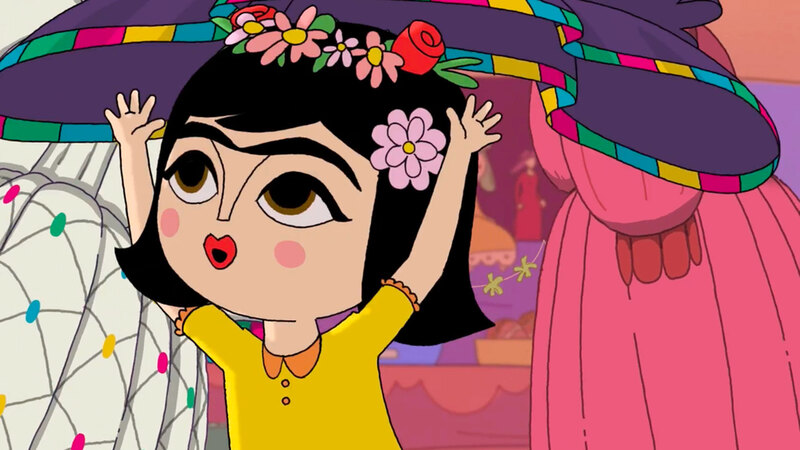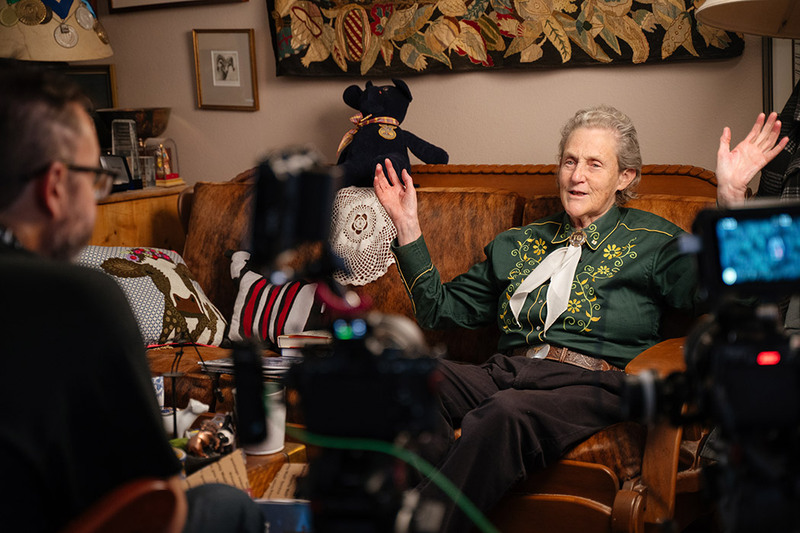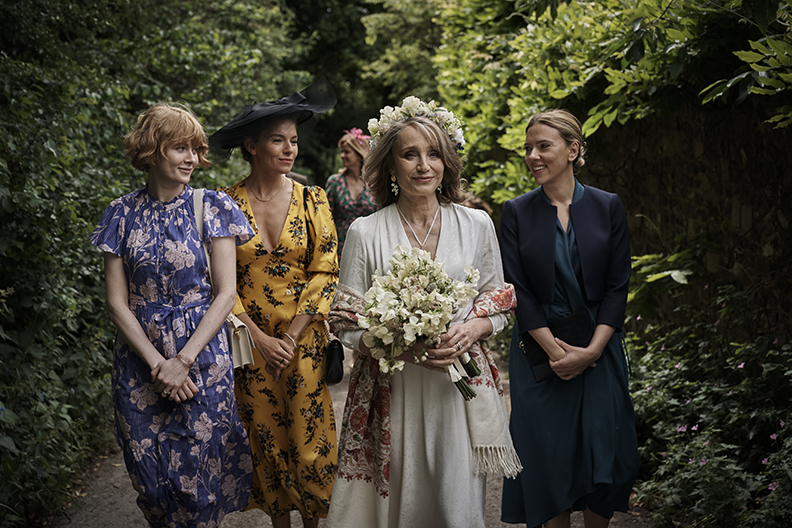
Animation Honors the Roots of a Creative Giant
MOVIE REVIEW
Hola Frida
–
Genre: Animation, Biography, Adventure
Year Released: 2025
Runtime: 1h 22m
Director(s): Karine Vézina, André Kadi
Writer(s): Anne Bryan, Sophie Faucher, Émilie Gabrielle, André Kadi
Cast: Layla Tuy-Sok, Lucinda Davis, Angela Galuppo, Oscar Vaillancourt, Marcel Jeannin, Eleanor Noble, Holly Gauthier-Frankle
Where to Watch: in select theaters August 8, 2025
RAVING REVIEW: HOLA FRIDA doesn’t aim to retell Frida Kahlo’s life in a deep biographical fashion. Instead, it narrows its focus to something more intimate: the artist’s childhood, long before she became the timeless icon. The result is a warm, artistic animated film that opens the door for a younger audience to connect with one of the 20th century’s most influential artists—not through her fame, but through her imagination.
Set in early 1900s Coyoacán, Mexico, the story begins with a spirited and curious young Frida. She’s an explorer, a dreamer, and a deeply empathetic child. When she’s diagnosed with polio, her world becomes confined to her bedroom, and from there, the real story begins. Rather than letting that illness defeat her, Frida escapes into her imagination—a vivid, fantastical space where colors bloom, ideas come to life, and resilience takes root.
The animation—lush, inviting, and brimming with detail—feels like a cross between a storybook and a dream journal. Directors Karine Vézina and André Kadi, adapting from the French-language series and book Frida, c’est moi, draw inspiration from Frida's actual diary and early artwork. That influence is felt in the transitions between reality and imagination, where flipbook-style visuals act as time-markers, giving children and adults alike a visual language to understand the emotional arc of her journey.
The use of color stands out immediately. From vibrant reds and yellows that echo traditional Mexican textiles to grey-toned sequences that reflect pain or isolation, the film's palette becomes part of the narrative. There are even visual Easter eggs for adult viewers familiar with Kahlo's later work—subtle nods to her paintings, style, and symbolism scattered throughout Frida’s imagined world. These flourishes are never overbearing; instead, they serve as graceful bridges between the child's and adult's perspectives.
What grounds the film is its honesty. The directors don’t sanitize Frida’s struggles, but they translate them in ways that children can understand without fear. One particularly effective sequence involves school bullying, a confrontation that leads not only to growth for Frida but empathy for the child who bullied her. Rather than simplifying that dynamic, the film acknowledges the complexity of pain, even in young people, and encourages compassion without condoning cruelty.
The voice cast brings warmth and sincerity to every scene. Olivia Ruiz, who also performs the film’s theme song, lends her voice to both older versions of Frida and an imaginary adult mentor, acting as a bridge between the past, present, and dream worlds. The score, composed by Laetitia Pansanel-Garric, is layered with mariachi-inspired sounds and delicate instrumentation that feels authentic without becoming caricature.
One of the film’s most interesting strengths lies in what it doesn’t do. It resists the urge to place Diego Rivera front and center, showing him only briefly and never allowing the narrative to hinge on their future relationship. Instead, the story honors Frida as her force, highlighting her family life, Zapotec heritage, and the influence of her father. This photographer encouraged her to color his images, planting the seed of her lifelong creative journey.
There’s a gentle educational thread throughout. The film introduces viewers to cultural practices such as the Day of the Dead and subtly explores indigenous identity and politics through moments at the market and family dinner tables. These scenes help flesh out the environment in which Frida grew up without turning the film into a lesson. It’s a deft balancing act that keeps the tone joyful even when the subject matter dips into illness or loss.
By focusing on Frida’s resilience, her relationship with her parents, and her ability to turn hardship into beauty, the film crafts a compelling portrait of a girl who would one day paint her reality with courage. The film may not be a definitive look at Kahlo’s legacy, but it’s an important entry point for the next generation—and a surprisingly moving one for adults, too.
Something fitting about the film’s final moments is that Frida’s heartbeat punctuates a scene involving her imagined encounter with La Muerte. It’s a powerful, nearly silent moment that connects the girl she was with the woman she would become. HOLA FRIDA might be a family film, but at its best, it echoes something essential about Kahlo herself: she didn’t need to escape her pain—she needed to make something from it.
Please visit https://linktr.ee/overlyhonestr for more reviews.
You can follow me on Letterboxd, Instagram, Twitter, and YouTube. My social media accounts can also be found on most platforms by searching for 'Overly Honest Reviews'.
I’m always happy to hear from my readers; please don't hesitate to say hello or send me any questions about movies.
[photo courtesy of LEVEL 33 ENTERTAINMENT]
DISCLAIMER:
At Overly Honest Movie Reviews, we value honesty and transparency. Occasionally, we receive complimentary items for review, including DVDs, Blu-rays, CDs, Vinyl Records, Books, and more. We assure you that these arrangements do not influence our reviews, as we are committed to providing unbiased and sincere evaluations. We aim to help you make informed entertainment choices regardless of our relationship with distributors or producers.
Amazon Affiliate Links:
Additionally, this site contains Amazon affiliate links. If you purchase through these links, we may receive a commission. This affiliate arrangement does not affect our commitment to honest reviews and helps support our site. We appreciate your trust and support in navigating these links.



Average Rating